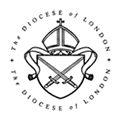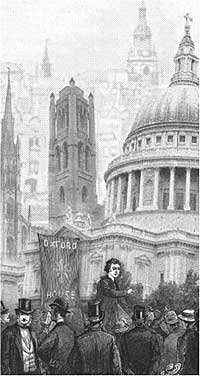Resource Guide: How to Write a Church and Parish History
You can find out quite a lot about the history of a church and parish without doing any research in a library or archives, and even without doing much reading. We suggest the following initial sequence of activity:
Look-Listen-Read-Research
Look
Look at the building itself – which may already be very familiar – with new and inquisitive eyes.
- When was it built? A foundation stone and/or dedication tablet may well quickly give an exact date, but architectural style and other evidence (such as the earliest dates of monuments and other artefacts) will give useful clues.
- Has it been significantly extended, altered or rearranged during its history? If so are there clues as to when and why?
- What ancillary buildings are there? (Hall? Sunday school? Vicarage? Day school?) What was their original purpose and how might this have changed? (For example some original schools are now church halls, with the school itself moved to a different site.)
- How does the church relate to its physical surroundings? Is/was it on a main road or a back street? Do/did a lot of people live nearby? Does it look like a focal point for a community, or a building that is easily ignored?
Listen
Talk to older and more longstanding members of the congregation. What can they tell you about the past history they have lived through, and perhaps about earlier periods they had themselves heard about? Do not accept what they tell you uncritically: they may well have particular viewpoints or prejudices, or simply have been misinformed. On the other hand their perspective on the past is to be valued and affirmed as part of the collective memory of the church community, and is likely to give you valuable insights into why people behave and think as they do. Follow this link for more information on oral history.
Read
There may already be a guidebook or parish history available. Another very useful resource to get an initial overview of the history of a church and parish is the Victoria County History for Middlesex, which closely corresponds to the area of the present-day Diocese of London. Copies are available in reference libraries, or online at www.british-history.ac.uk (from the home page click on ‘London' and then on ‘Victoria County History: Middlesex').
A number of suggestions for background reading are made in relation to specific topics in the links below. Bear in mind, however, that it is most unlikely to be necessary to follow up all the suggestions made: alternatives are offered in order to help those with limited access to good libraries.
Research
Before taking things further it is important to be aware that parishes vary a lot in their history and hence the extent and kind of resources available for studying them. In the City of London the numerous surviving medieval and Wren churches are testimony to the dense population of earlier centuries, but now in general lack resident parishioners. A parish originating the medieval era originally had extensive civil as well as religious functions, and in outer London its church, probably in an historic village or town centre – such as Finchley, Hammersmith or Harrow - would originally have been a centre of worship for a large area. On the other hand, the majority of churches in suburban London were built in the nineteenth-century or later in response to population growth and urbanization, and their parishes were created with solely ecclesiastical and spiritual functions. Such churches sometimes had a significant prehistory before the creation of their parishes as ‘chapels of ease' – meaning they were built for the ‘ease' of significant populations living at a distance from the parish church - or mission halls within the medieval mother parish.
If ‘your' parish is a post seventeenth-century foundation it will also be useful at an early stage to look up the original Act of Parliament, or more probably Order in Council, setting it up. This can be found in the London Gazette, available online at www.london-gazette.co.uk – you should use the ‘Advanced Search' facility and narrow the date range as much as you can from other information available to you.
Further enquiries are likely to take you to Lambeth Palace Library, the London Metropolitan Archives, or perhaps your borough archives or local history library. Full advice on accessing and using these collections is given elsewhere in this guide. However before heading off to such repositories, first look and listen as to what resources might available on your own doorstep. For example: Is there a run of old parish magazines gathering dust on the vestry shelves? Has some-one kept a parent's or grandparent's diary or photograph album recalling church life in the earlier twentieth century? Such material can be very useful and revealing.
For more specific guidance on exploring particular aspects of church life in the past select one of the following questions: how do I find out about….
- the architecture of a parish church building?
- an individual cleric?
- members of the laity and their activities?
- the patterns and practice of worship in a church?
- the place of children in a congregation?
- the outreach activities of a parish church?
- the circumstances in which a church was planted?






